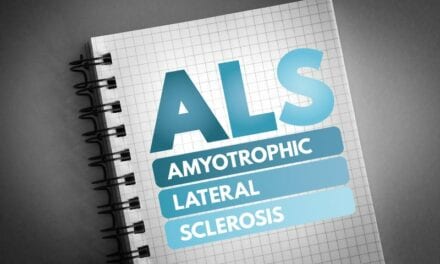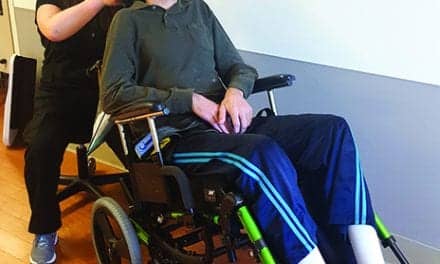Results from a clinical study in four patients with severe paralysis implanted with Synchron’s first-generation Stentrode, a neuroprosthesis device, have been published in JAMA Neurology, Synchron announces.
The study suggests that it is possible to use the neuroprosthesis device to transmit neural signals from inside a blood vessel in the brain over a long-term period without any serious adverse events related to the device.
The Stentrode With Thought-Controlled Digital Switch (SWITCH) study, a first-in-human study, evaluated four patients implanted with Synchron’s Stentrode. Patients participating in the study completed a 12-month follow-up with no persistent neurological deficits. There were no clots or migration of the device. Signal quality remained stable with no evidence of significant deterioration.
Each participant successfully controlled a personal computing device with the BCI. Participants were able to use the implant to generate digital switches under intentional control for routine digital activities, such as texting, emailing, personal finance, online shopping, and communication of care needs.
The study was led by investigators Professor Peter Mitchell, a leading neurointerventionalist who performed the procedures, and Professor Bruce Campbell, a vascular neurologist from the Royal Melbourne Hospital and the University of Melbourne. The procedures were performed in a neurointerventional angiography suite.
“We carefully conducted this first-in-human study with a primary focus on safety. The patients all tolerated the procedure well and were typically discharged home within 48 hours,” said study Co-Principal Investigator Professor Peter Mitchell, Director of Neurointervention, Royal Melbourne Hospital. “The widespread availability of the angiography suite for this procedure could promote a rapid translation of BCI for people with paralysis.”
Paralysis may result in a loss of control of muscles in the body, while the brain can remain intact. Motor intent is the brain signal underlying the physical will to move. A brain-computer interface is designed to restore the lost motor intent signal transmission associated with paralysis. The device is implanted in the motor cortex of the brain via the jugular vein in a minimally-invasive endovascular procedure. Once implanted, it detects and wirelessly transmits motor intent in order to control personal digital devices.
Motor intent was detected using a robust decoder that searches for power changes in certain frequency bands. The digital switches were executed under the volitional control of frequency band shifts by the users.
Synchron’s first-generation system was developed in partnership with Ripple LLC (Salt Lake City) and utilized Ripple’s neural sensing technology to provide core signal acquisition, data telemetry and signal processing capabilities.
“This technology holds great promise for people with paralysis who want to maintain a level of independence,” said Co-Principal Investigator Bruce Campbell, MD. “The Stentrode enables a form of motor restoration, with individuals able to use the switches to communicate and engage with their digital world.”
“The SWITCH study is an early demonstration of safety in a low number of participants using a commercial grade brain-computer interface. The decoder was simple and robust, meaning that patients didn’t have to train hard to execute switches,” said Tom Oxley, MD, PhD, CEO and Founder. “Our view is that a motor neuroprosthesis should be safe and easy to use. Digital switches controlled by motor intent could translate into a meaningful restoration of motor capability for patients with paralysis and the return of things we take for granted, like texting loved ones or turning on a light.”
The publication of this study follows Synchron’s announcement of ongoing patient enrollment in the COMMAND trial at Carnegie Mellon, the University of Pittsburgh and Mount Sinai Hospital to assess safety and explore quantified efficacy measures of Stentrode. Three out of six participants have been enrolled in the COMMAND trial, two in New York City and one in Pittsburgh. The clinical trial sites are actively looking for the next participants. Patients with severe paralysis due to ALS, stroke, spinal cord injury or multiple sclerosis may be appropriate for the study.
[Source(s): Synchron Inc, Business Wire]
Related Content:
Synchron Announces First Human Brain-Computer Interface Implant in US





